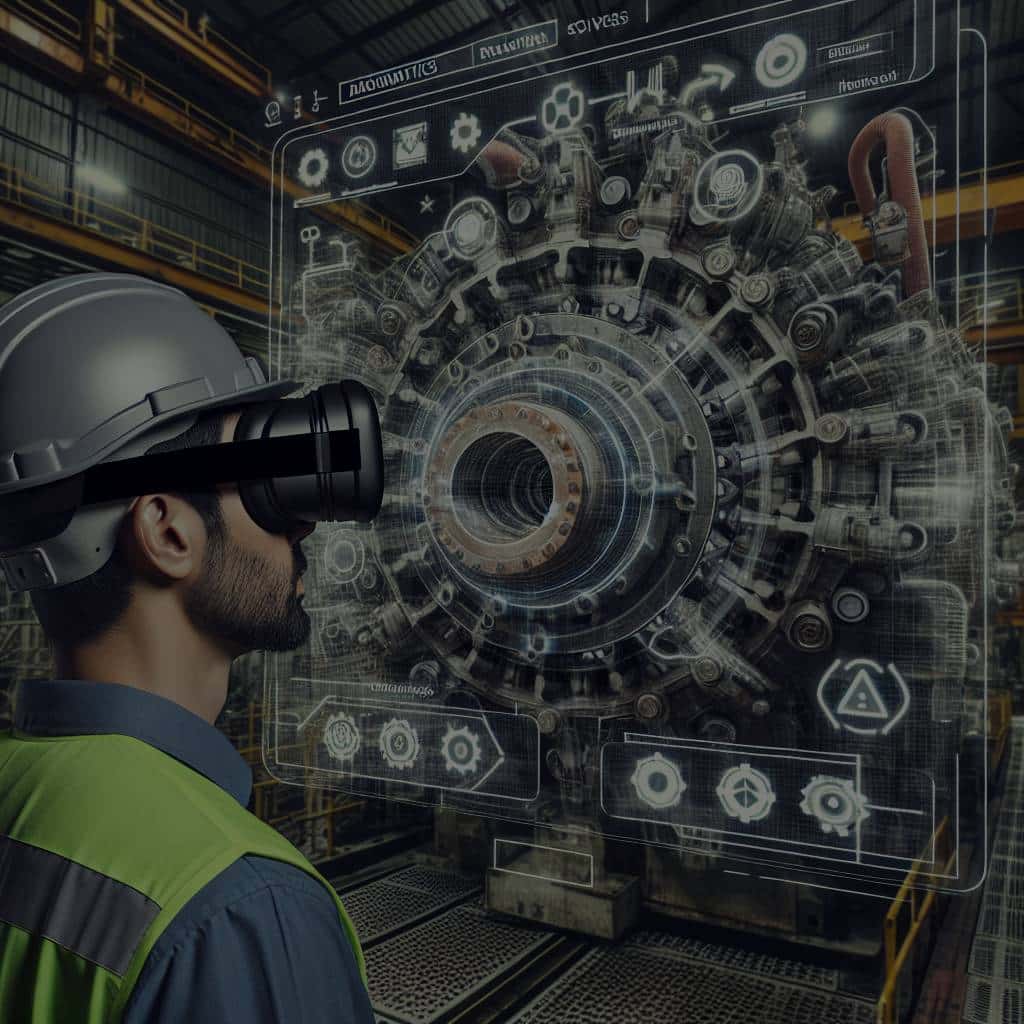In a world where technology is evolving at an unprecedented pace, industries are finding new and innovative ways to improve efficiency and productivity. One technological advancement that is transforming the way we carry out machinery repair and maintenance is augmented reality.
Augmented Reality in the Manufacturing Industry
Augmented reality, or AR, is not a new concept. However, its application in the manufacturing industry is relatively recent and is already making significant impacts. This technology overlays virtual data onto the real world, providing the viewer with additional information that can assist in executing tasks more effectively.
This might interest you : Can AI-Enhanced Biometric Authentication Fortify Mobile Banking Security?
AR is being particularly used by maintenance technicians for real-time repair of manufacturing equipment. Whether it is routine maintenance or an unprecedented breakdown, technicians are utilizing this technology to perform their tasks faster and more accurately.
Also to read : Chatbots and IT security: a solution for cybersecurity
How Technicians Use Augmented Reality for Maintenance Tasks
In the past, technicians had to rely on manuals and their experience to address machinery problems. However, augmented reality has changed this traditional approach. Now, technicians can wear AR glasses or use an AR-enabled smartphone or tablet to get interactive, step-by-step instructions overlaid on the machinery they are working on.
With this technology, even novice technicians can carry out complex repair tasks that would have otherwise required a more experienced technician’s intervention. Moreover, augmented reality reduces the occurrence of errors, thereby leading to a higher first-time fix rate.
AR not only overlays instructions but can also highlight potential problem areas in the equipment. By analyzing the machinery’s data, it can identify parts that may need replacement or areas that require further inspection. This proactive approach allows for more timely maintenance, reducing the chances of unexpected equipment failure.
Augmented Reality for Remote Assistance
Another significant advantage of augmented reality is its ability to provide remote assistance. In cases where a technician on site is unable to resolve the issue, an expert from a remote location can guide them through the repair process in real-time using AR.
The expert can see exactly what the on-site technician is seeing and can provide real-time guidance. This can include drawing annotations or demonstrating the repair procedure virtually on the technician’s AR device, allowing them to perform the task correctly. This not only saves time but also eliminates the need for the expert to be physically present at the location, reducing travel costs and downtime.
Training Technicians with Augmented Reality
AR is not only revolutionizing repair and maintenance tasks, but it is also proving to be a valuable tool for training technicians. Traditional training methods often involve classroom-based learning and hands-on training. However, these methods can be time-consuming and costly, especially when it involves complex machinery.
AR-based training programs, on the other hand, allow technicians to learn in a more interactive and engaging environment. They can visualize the internal components of a machine, understand how they work, and even perform virtual repairs. This hands-on experience, without the risk of causing real damage, significantly enhances their learning and prepares them for real-world situations.
The Future of Maintenance with Augmented Reality
While augmented reality is already making significant strides in machinery repair and maintenance, its potential is far from exhausted. As this technology continues to evolve, it is expected to become an even more integral part of the industry.
The future may see technicians equipped with advanced AR headsets that can provide more detailed and accurate information. These devices may also incorporate features like voice recognition, allowing technicians to operate hands-free.
Furthermore, with the introduction of advanced AI algorithms and machine learning, AR systems could predict potential machinery issues before they happen, prompting preemptive maintenance and saving both time and money.
As the manufacturing industry continues to embrace digital transformation, the integration of augmented reality in maintenance and repair tasks is a step towards a more efficient and productive future. This technology is not only changing the way technicians work but is also enhancing the overall performance of the industry.
Enhanced Field View with Smart Glasses for Maintenance Tasks
One of the most innovative aspects of using augmented reality in machinery maintenance and repair is the use of smart glasses. These devices provide technicians with an enhanced field view and hands-free access to real-time data and instructions. As a result, they can perform tasks more efficiently and accurately.
With smart glasses, technicians can view virtual objects and content overlaid onto the physical world. This can include diagrams, instructions, predictive maintenance information, and real-time data from the machinery. This information is often displayed in a heads-up, hands-free format, allowing the technician to continue working while accessing the information.
For instance, a technician might be repairing a complex piece of equipment. By using smart glasses, they can view step-by-step maintenance procedures overlaid onto the machine, guiding them through the process without needing to refer to a manual or use a separate device. They can also access real-time data from the machine, helping them diagnose and resolve the issue more effectively.
Moreover, smart glasses can be equipped with cameras and sensors, providing additional functionalities. For example, they can capture what the technician is viewing and share it for remote assistance or record it for future reference and training purposes.
Industrial Maintenance Revolutionized by Augmented Reality Technology
Augmented reality is revolutionizing industrial maintenance operations. By overlaying virtual content onto the real world, AR provides real-time, contextually relevant information that can aid in both routine maintenance and unexpected repairs. It is an innovation that is enhancing the way technicians work, altering traditional maintenance planning, and ultimately, boosting the efficiency and productivity of the industry.
One of the most significant benefits of AR is its ability to facilitate remote assistance. This not only saves time by providing instant expert guidance but also reduces costs by eliminating physical travel. Furthermore, it promotes knowledge sharing and collaboration among technicians.
Another major advantage of AR is its potential for training. By providing an immersive, interactive learning environment, AR can significantly improve the training process for technicians. They can gain hands-on experience without the risk of causing real damage, preparing them for real-world scenarios more effectively.
Moreover, with advancements in AI and machine learning, the predictive maintenance capabilities of AR systems are expected to improve significantly. This could lead to more efficient maintenance operations, as potential issues can be addressed before they turn into serious problems.
In conclusion, augmented reality is a powerful tool that is transforming real-time machinery repair and maintenance. By integrating AR into their operations, industries can not only improve efficiency and productivity but also future-proof their businesses in an increasingly digital world. As AR technology continues to evolve, it is set to play an even more critical role in the world of machinery maintenance and repair.











